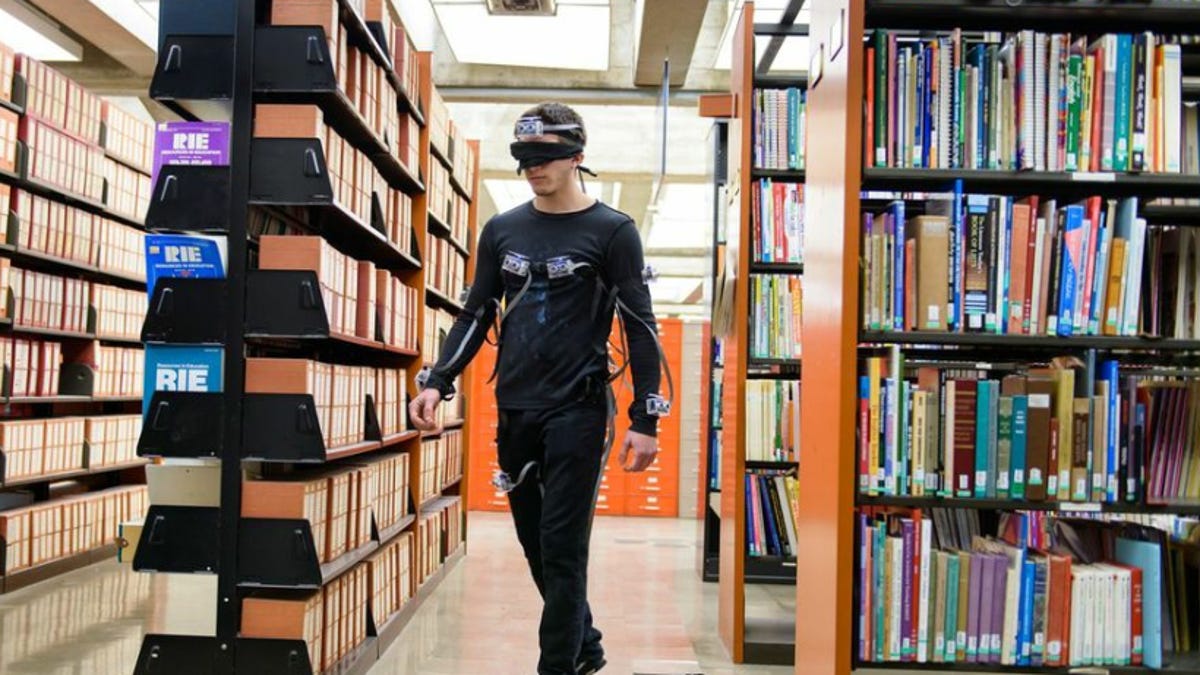Feel like Spidey in a real-life spider-sense suit
Geeky getup developed by student lets wearers sense nearby objects in much the same way Spider-Man detects danger without the benefit of sight. Sorry, no web shooters included.
If Peter Parker's spider-sense ranks high on your list of coveted superpowers, you may experience a strange tingling sensation at news of a suit that alerts the wearer to the presence of nearby objects.
Victor Mateevitsi, a Ph.D. candidate at the University of Illinois' Electronic Visualization Laboratory in Chicago, is the main man behind SpiderSense, a "wearable device that projects the wearer's near environment on the skin and allows for directional awareness of objects around him" in much the same way Spider-Man can detect danger without the benefit of sight.
The suit -- which is for better or worse far less pec-revealing than Spidey's getup -- consists of 11 sensor modules positioned for 360-degree coverage. Each sensor module houses an ultrasonic range finder and a servo motor. The sensor modules scan the environment for obstacles and alert the wearer to them by exerting pressure to the skin via the servo motor's arm.
The prototype suit, which cost $500 to make, has a 60-inch radius. Different sensor modules get activated depending on the size and the position of the nearby object, meaning the outfit would react differently to a big scary mugger sneaking up from behind than a cute kitty cat approaching from the front.
"The sensor modules apply pressure to the skin proportional with the distance from the object," Mateevitsi tells Crave. "The closer an object approaches, the greater the pressure."
Together with students Brad Haggadone and Brian Kunzer, Mateevitsi conceived of the suit for a class on human augmentics. "During our brainstorming meetings it became apparent that we have reached a point where technology can sense and react to dangers that we humans cannot sense," Mateevitsi says.
The team conducted various tests of the wearable device, including a threat detection experiment. In it, "attackers" were instructed to approach the blindfolded wearer from random directions, with the suited-up guy instructed to throw cardboard ninja stars in the direction he felt the threats were coming from. The wearer was able to identify the direction of the attacker and successfully hit him with the ninja star 95 percent of the time, Mateevitsi reports.
While the suit could certainly prove useful for identifying Mysterio and the Green Goblin in the vicinity, Mateevitsi envisions several far more real-world applications.
The suit could be worn by workers in hazardous environments, for example, to avoid falling debris, or by those with impaired vision or hearing to detect an oncoming car while crossing the street.
Scaled-down versions could also be useful, Mateevitsi suggests.
"Imagine positioning two sensor modules on a pair of slippers of an elderly person with vision disabilities," he says. "His vision would be supplemented with feedback from the slippers, keeping him safe from obstacles that could potentially harm him. Bicyclists could have one sensor on each forearm facing outwards and two sensors on their back therefore being aware of passing or incoming traffic."
Mateevitsi will present a paper that describes the device (PDF) on March 7 at the Augmented Human conference in Germany. Hopefully, he'll be wearing SpiderSense so he can detect anyone trying to sneak up behind him.


